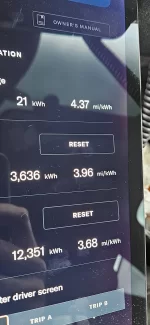- Joined
- Oct 16, 2024
- Messages
- 31
- Reaction score
- 31
- Location
- Villa Rica, GA
- Cars
- Lucid Air Touring
- Referral Code
- EVLU4959
So, I had an emergency trip that I had to take so I hopped in my Touring and drove 730 miles from Georgia to NJ.
My observations:
1) The EPA rating is a complete farce. (not really a surprise)
2) Everything that was ever printed about the speed of charging in the Lucid is also a complete farce. I got over 200kw once and it lasted for about 2% of the charge. After that it dropped rapidly and continuously. This was at 4 different EA, 350kw chargers along the way. Most of the time, it peaked between 150-180 kw.
3) Finding chargers was a cinch. They were everywhere I needed and I didn't have to wait to use any of them. Of course, I was mostly charging between 3pm and 4:30am.
4) Not something about the charging, but the navigation in the Lucid is abhorrent. 3 different times it wanting me to exit the interstate, travel to the next on ramp and get back on the interstate.
5) I tried to use the 110V mobile charger just to add a little cushion since the car was just sitting in the driveway, but it blew the circuit breaker, so that was a no go.
My observations:
1) The EPA rating is a complete farce. (not really a surprise)
2) Everything that was ever printed about the speed of charging in the Lucid is also a complete farce. I got over 200kw once and it lasted for about 2% of the charge. After that it dropped rapidly and continuously. This was at 4 different EA, 350kw chargers along the way. Most of the time, it peaked between 150-180 kw.
3) Finding chargers was a cinch. They were everywhere I needed and I didn't have to wait to use any of them. Of course, I was mostly charging between 3pm and 4:30am.
4) Not something about the charging, but the navigation in the Lucid is abhorrent. 3 different times it wanting me to exit the interstate, travel to the next on ramp and get back on the interstate.
5) I tried to use the 110V mobile charger just to add a little cushion since the car was just sitting in the driveway, but it blew the circuit breaker, so that was a no go.

